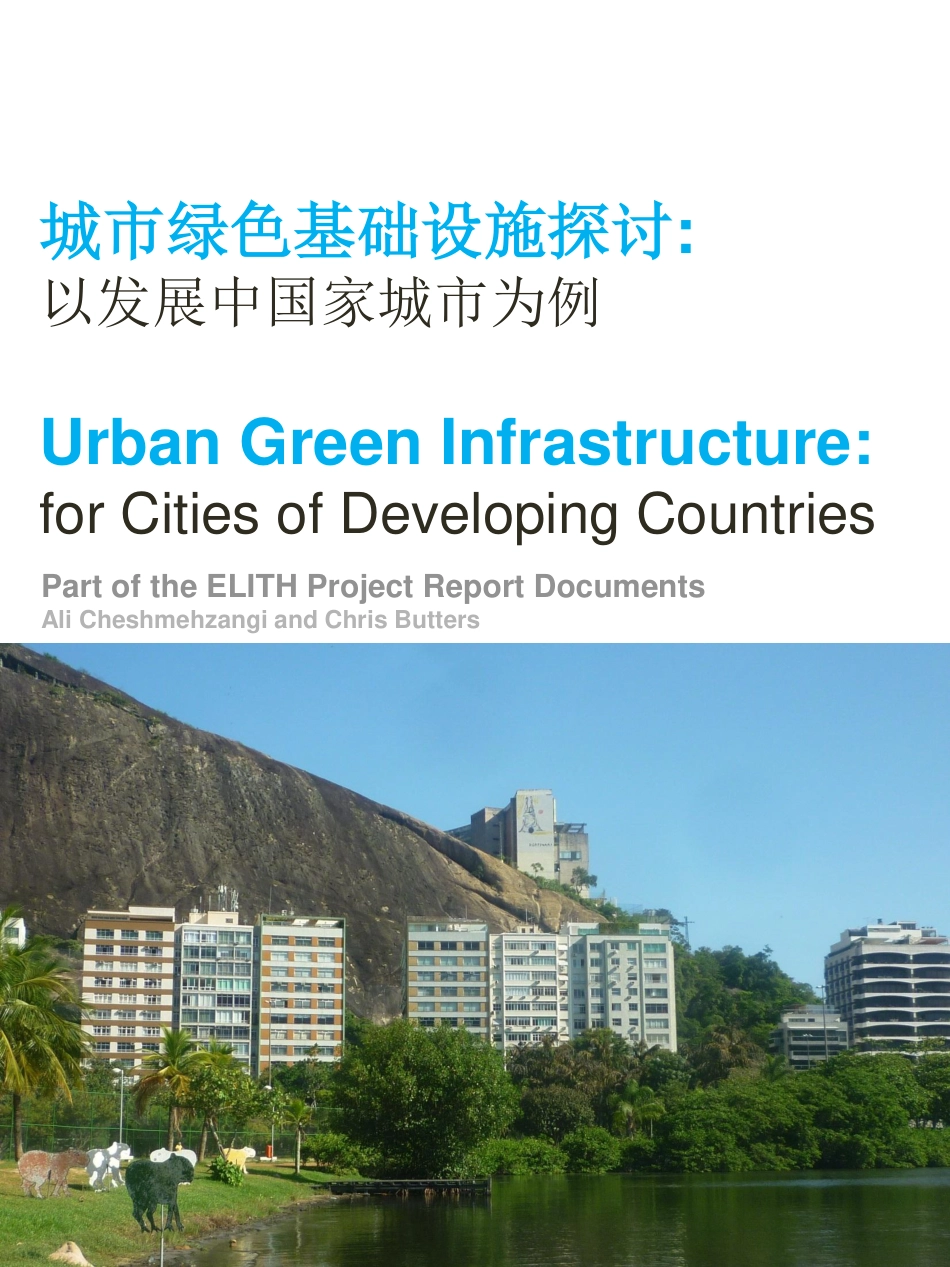城市绿色基础设施探讨: 以发展中国家城市为例 Urban Green Infrastructure: for Cities of Developing Countries 0 Part of the ELITH Project Report Documents Ali Cheshmehzangi and Chris Butters 前言 发展中国家的城市大多处在炎热的气候带中,并正在迅速发展。他们未来的能源和环境影响是一个主要问题。世界各地的例子表明,城市可以用一个更可持续的方式计划和建设,并且不需要较高的成本。 城市的绿色基础设施包括其开放空间、植被、公园、湖泊和水文要素。这些设施用于提供新鲜空气和休闲场所,并过滤污染物,也是城市通风的关键。如果计划合理,他们有助于建设更少污染、更健康、更凉爽的城市,并大大降低城市的能源需求和成本。 一 些最有效的环境规划往往是是简单廉价的。所以,在对已存在的解决方案有更深刻的认识和了解的情况下,更环保、更舒适、更可持续发展的城市是可以实现的。通常观点下,可持续发展方案不是太贵,就是很难被政府强制执行。所以我们更偏向于现实的途径和政策,而不是那种无谓地阻碍开发商或者严重受制约的规划。 2 Foreword Developing country cities are mostly in hot climates and are growing very rapidly. Their future energy and environmental impacts are a major concern. Examples worldwide show that cities can be planned and built in a more sustainable way – without significantly higher costs. The green infrastructures of a city are its open spaces, vegetation, parks, lakes and water features. They provide fresh air and recreation, but they can also filter pollutants and are a key to urban ventilation. If well planned they help to make a city less polluted, healthier and also cooler, considerably reducing the city’s energy needs and costs. Some of the most effective environmental planning is simple and inexpensive. In many cases greener, more comfortable and sustainable cities can be achieved – given more awareness and knowledge about solutions that already exist. One hears often that sustainable solutions are either too expensive,...



